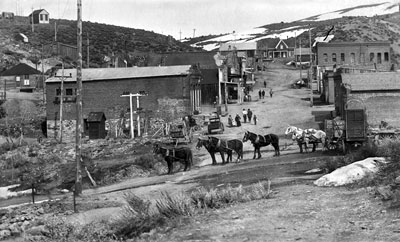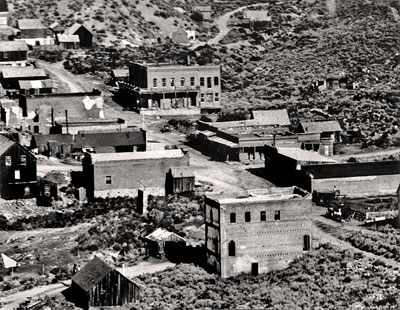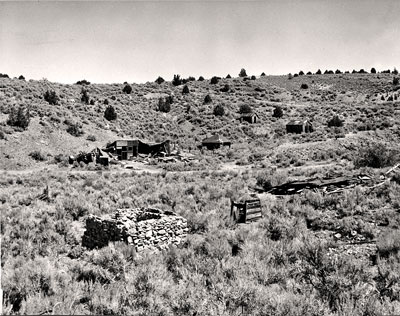National Register of Historic Places in Mineral County
Aurora Historic District
Toiyabe National Forest
Aurora
Although precious metal deposits were found in nearby lower elevations in 1852, gold and silver deposits were first discovered in the Aurora area in August 1860. Within 2 months, prospectors had filed 350 claims. Aurora township was begun in 1861, and votes cast that year totaled 593.
In March 1861, the California State Legislature made Aurora the county seat of Mono County, while Territorial Governor Nye made it Council District 1 under his authority. Later that year, the Nevada Legislature created Esmeralda County with Aurora as the county seat. Because the boundary dispute was not resolved by the next general election in 1863, voters cast ballots at one polling place for California officials and at another for Nevada candidates. Settled by the boundary survey of 1864, Aurora was found to be three miles inside the Nevada border. Aurora remained under Territorial government until October 31, 1864, when Nevada became the 36th state. Esmeralda County was divided in 1911 by the Nevada Legislature and Aurora now lies within the area of Mineral County, created that year.
The big rush to Aurora began in 1862. A temporary army camp, Camp Aurora, was located within one mile of town and occupied by a detachment of soldiers from Fort Churchill, Nevada, to quell disturbances between the settlers and Indians in the Mono Lake and Adobe Meadows regions of California.
By 1863 the town contained 5,000 people including Mark Twain who experimented here, briefly, with a mining career. "Roughing It" contains an account of some of his experiences in Aurora. In 1864 the population grew to 7,000 people, pro-Union in the Civil War dispute. Four newspapers were printed in Aurora.
In 1863 Aurora is pictured as a cluster of huts made of stone, sheltered by canvas or tin roofs, with streets of wooden buildings, and many substantial brick structures near the center of town, and uncountable tents and dugouts in the surrounding hills. About 5,000 persons lived in these makeshift shelters and in the 700 houses, and enjoyed the services provided by the hotels, churches, 20 stores, 22 saloons and 16 quartz mills.
The rich veins that sustained Aurora were shallow and business slowed by 1864. By 1870 half of Aurora's houses were empty and most of the mills and numerous other buildings had been dismantled and moved away. By 1880 only 500 persons remained, and in 1883 Aurora lost the county seat to Hawthorne. A large part of Aurora's population moved 10 miles southeast to the then booming town of Bodie, California. By 1879 Bodie had 10,000 residents. Two fires caused the loss of a large part of that town, but it is still one of the best preserved ghost mining towns in the West, and is now a California State Historical Park.
For a few years after its decline in 1870 there were about 100 buildings standing intact. Many brick buildings were torn down after World War II for the used brick they contained. Only fallen-down buildings, rubble, foundations, and the cemetery remain in 1972.
Source: NRHP Nomination Form


